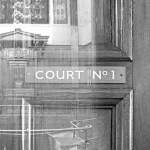After suing a problem debtor, obtaining a county court judgment (CCJ) and transferring the matter to a High Court Enforcement Officer (HCEO) via a Writ of Control, it is a welcome relief when we can update our client that payment has been obtained by the HCEO.
Under the provisions of the Insolvency Act 1986, the HCEO is duty bound to retain the money for 14 days before remitting the same to the creditor. Whilst many creditors are not aware of this and understandably, it can be an annoyance, the rules are there to protect the creditor and ensure a fair process for all, including other creditors. During this 14-day period, the money belongs to neither the creditor or debtor, but is held in case a winding-up or bankruptcy petition is issued (perhaps by another creditor) and so the money can be returned to the official receiver or liquidator.
Once 14 days have passed and no petition has been issued, the money will be released to the creditor.
Whilst this may seem unfair to the creditor whose judgment brought about the payment, it offers overall fairness. Writs of Control should be enforced in the order that they are issued and so if multiple Writs are in existence, it would not be fair to other creditors who have to wait for their Writ to be enforced, if the prevailing creditor was entitled to keep the money should a petition be issued.
If you have any questions about enforcement via the HCEO or any of the other enforcement methods, then we are happy to have a no obligation discussion.


